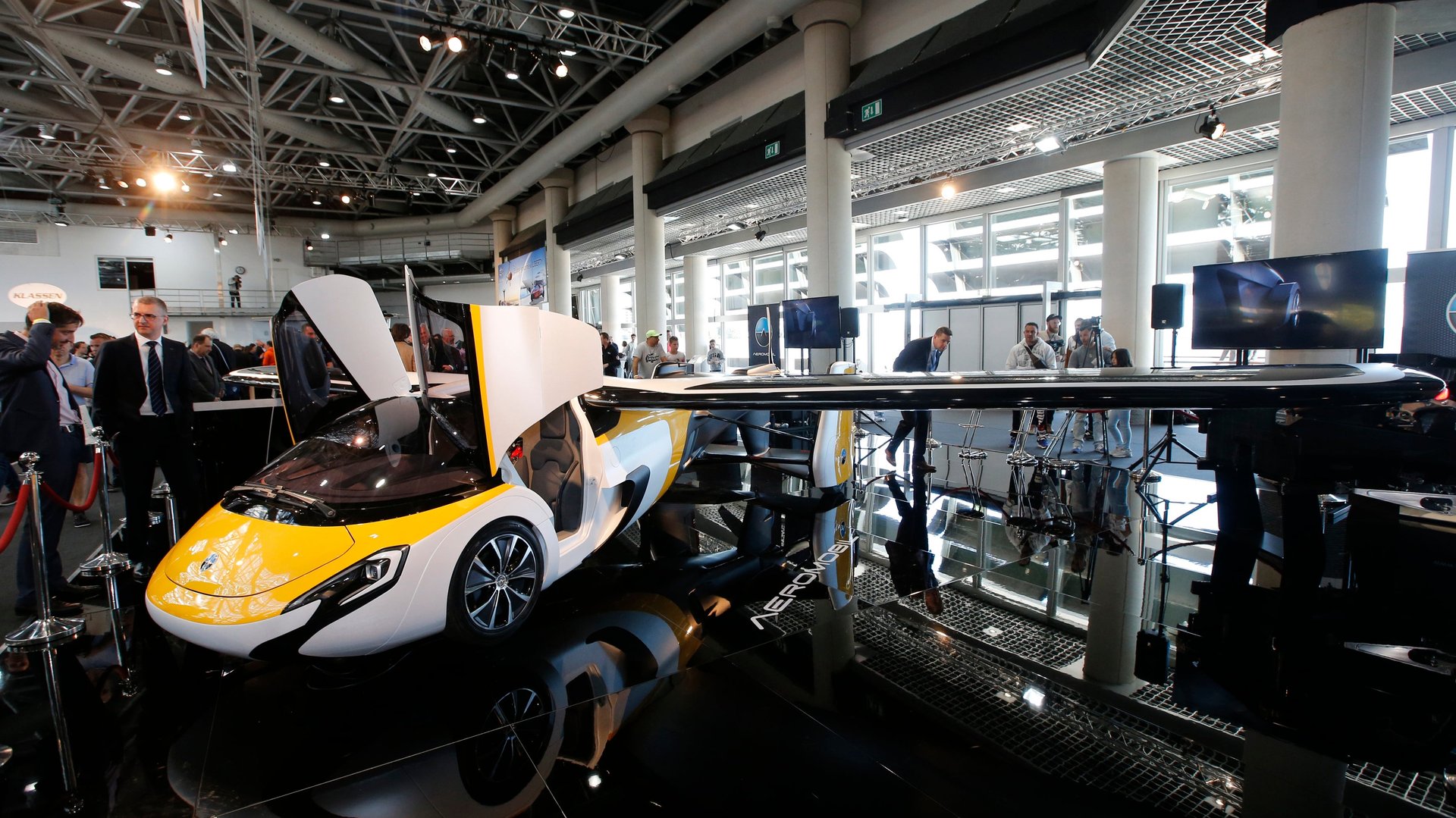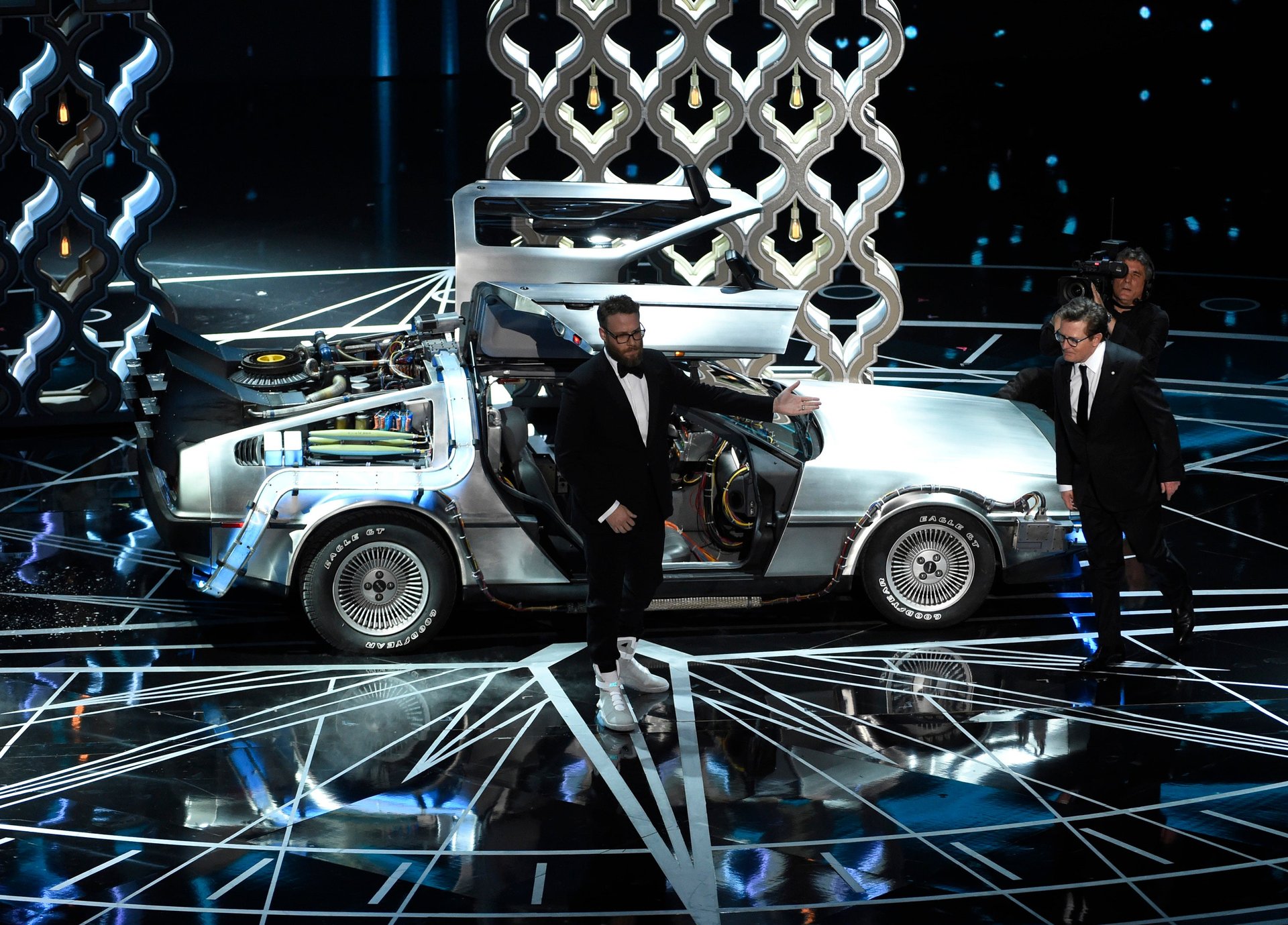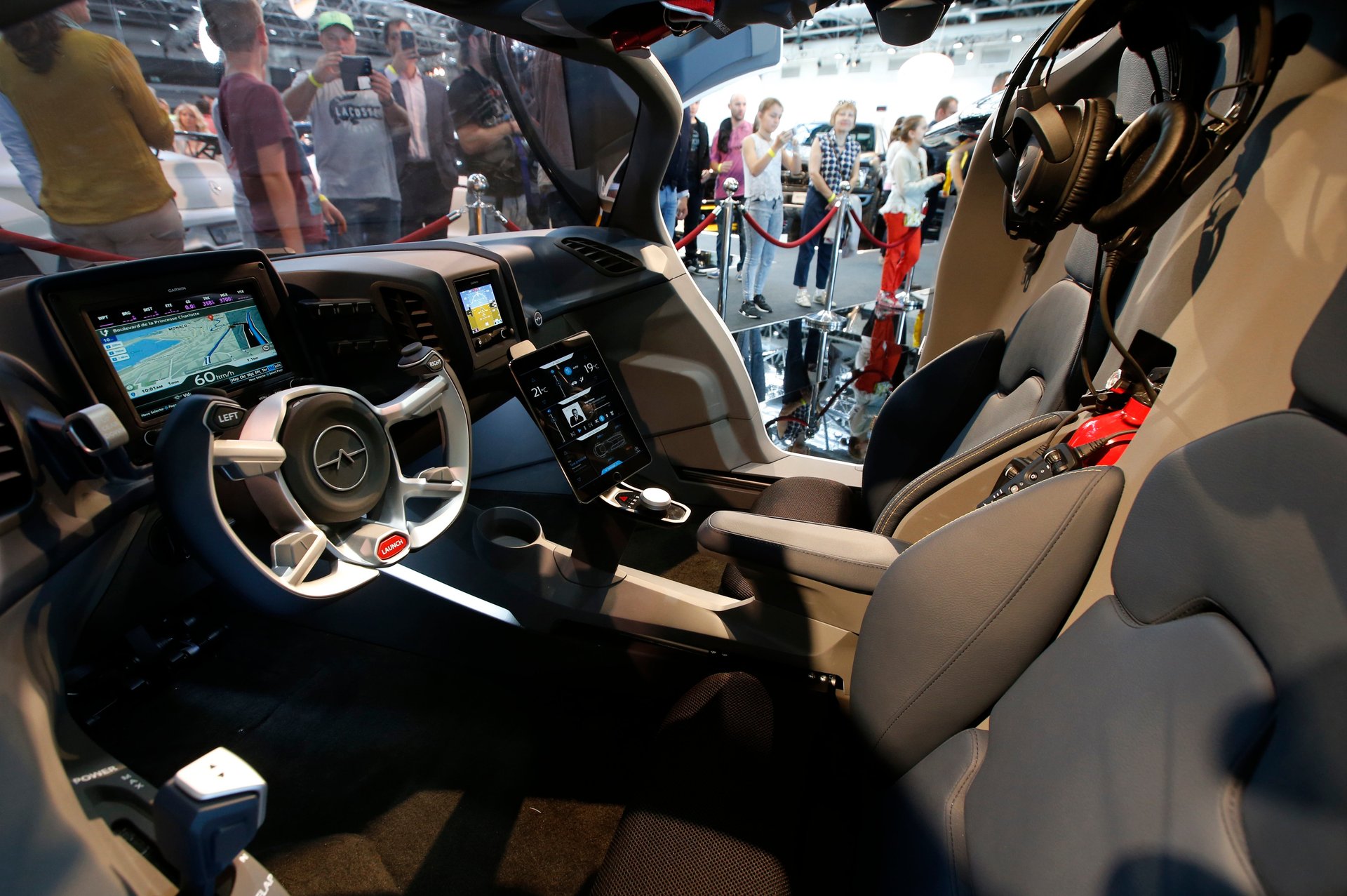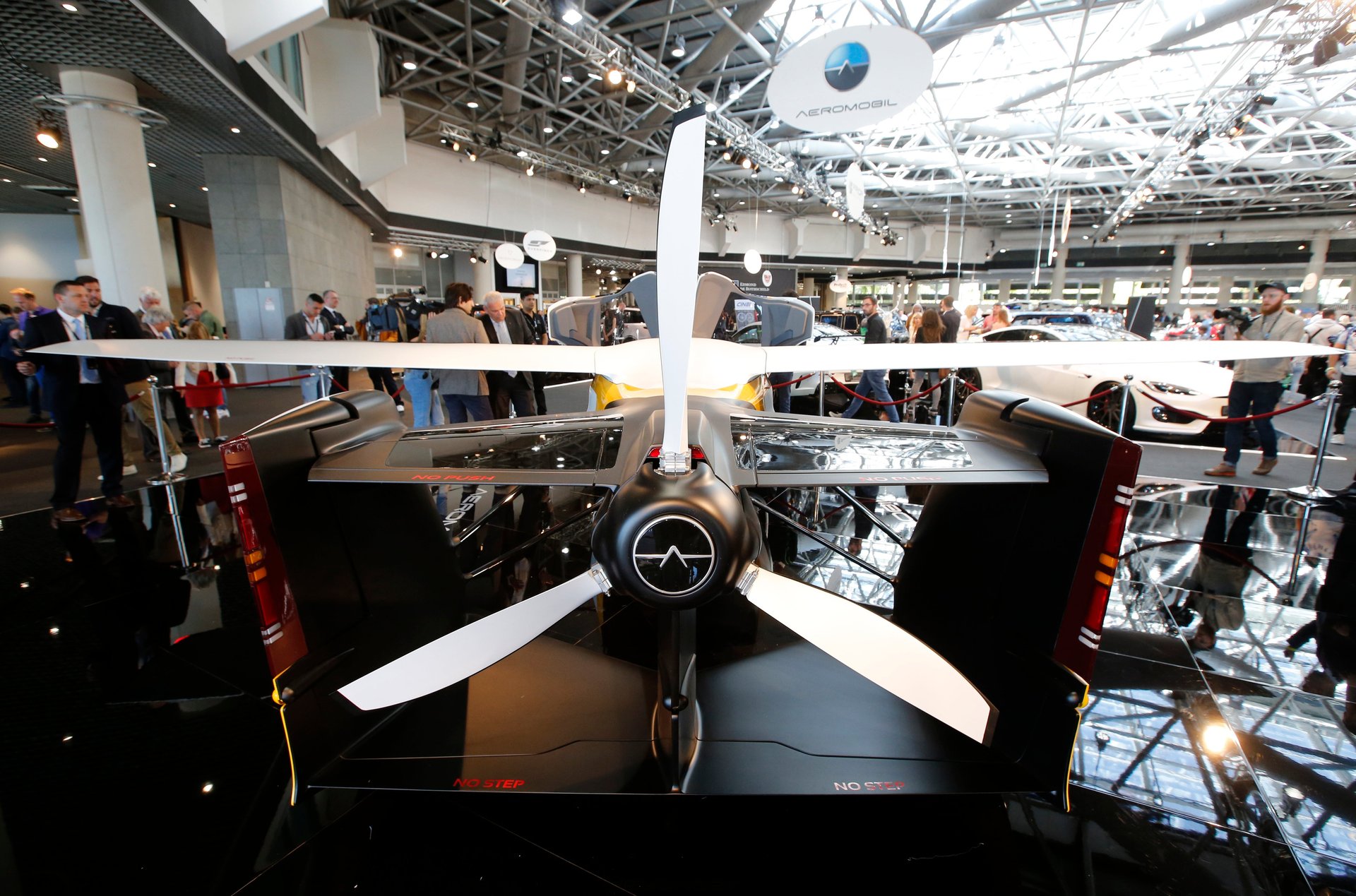There’s no such thing as a flying car
One of the few things that Peter Thiel has said in recent years that pretty much everyone can agree upon was about the current state of innovation: “We wanted flying cars, instead we got 140 characters.”


One of the few things that Peter Thiel has said in recent years that pretty much everyone can agree upon was about the current state of innovation: “We wanted flying cars, instead we got 140 characters.”
Some companies believe they’re about to change that. Today, a company called AeroMobil unveiled a $1 million vehicle that it says can fly in the air, and drive on regular streets. It, along with other similar vehicles, is being referred to as a “flying car.” But is that really what these machines are?
Flying cars are one of those longstanding science-fiction tropes that generations of moviegoers and book readers have hoped would become a reality, much like robots that look like C-3PO, or machines that can make any kind of food in an instant. But in 2017, our most advanced human-shaped robots are just starting to walk on their own, our 3D printing machines can only spit out trinkets, or maybe a pancake, and our cars definitely don’t fly.
We’ve either managed to produce or come very close to a lot of the technology that movies like Back to the Future Part II predicted we’d have today when they were made 30 years ago, which is an amazing feat of human intelligence, design, and engineering. But as 2015 showed us, we are no closer to creating hoverboards that actually hover than we were in the 1980s. That term was ruined by companies trying to sell us self-balancing scooters that exploded and hurt people because they were poorly made. The same thing might be about to happen to another technology that Marty McFly used in his futuristic version of today.

In most representations of flying cars, whether it’s Back to the Future, The Jetsons, the Star Wars franchise, that one episode of Doctor Who, or The Fifth Element, we tend to see them as self-contained, car-shaped objects that appeared to be propelled by jet propulsion, or other, unexplained, futuristic technologies. They don’t tend to have wings or rudders or propellors.
But AeroMobil’s vehicle looks like a small plane that has foldable wings. Its interior looks like a cockpit that has some very nice upholstery in it. And when the machine is in “car mode,” it doesn’t look like a car. It does not have a traditional wheelbase, instead the front two wheels sit below the body of the vehicle, and the back wheels sit far apart on a lightweight frame that makes it look more like a three-wheeled car or the hilariously ostentatious Polaris Slingshot, which is technically classified in the US as a motorcycle. Lilium, another startup that’s also operating in the “flying car” space, has produced a vehicle that doesn’t even have wheels.

There are companies that will try to convince you that what they’re working on is a flying car. Many companies, including Uber (which has enough problems with ground-based technology), seem to believe what one of the things that differentiate what they’re working on from regular planes is their ability to perform vertical take-offs and landings, what’s referred to as VTOL. But that acronym itself comes from—unsurprisingly!—the aviation industry, and can be applied to other aircraft like the Harrier jump jet and the V-22 Osprey. Neither of these massive, expensive machines would ever be mistaken for cars. (Uber at least, in its manifesto on the future of airborne travel, doesn’t refer to its vision as “flying cars,” but it does still think that we’ll be “ridesharing” in “VTOL aircraft.”)
Perhaps this is just a nomenclature issue. We also don’t have a good name for what to call the robots shaped like cars that will be driving us around in the future—”self-driving cars” is too long, “autonomous vehicles” is as well—and perhaps in the future we’ll just refer to them as “cars.” But the thing that AeroMobil showed off sits somewhere uneasily between our standard definition of a plane and a car.
It also takes many hours and a lot of money to become a pilot—in the US, we let teenagers crash around in cars with their parents to get their driving licenses, and most of them pass by the time they’re heading off to college. Do we want to apply the same standard to vehicles in the sky?

Perhaps this will be a moot point, as many of these same “flying car” companies are also working on making these machines fly themselves. At the Consumer Electronics show in 2016, Ehang, a Chinese drone manufacturer, showed off a large drone-shaped aircraft that can theoretically transport a person from one location to another on its own.
But over a year later, the machine (which is really just a helicopter, or more accurately, an “octocopter”) is still in the preliminary testing phase, and critics argue that the technological hurdles of self-flying aircraft, coupled with the regulatory issues of trying to integrate something like this into national airspaces may mean it will be a very long time before we see something like this when we open up a ride-hailing app.
In the US, the Federal Aviation Administration has been working for years to develop a plan to integrate autonomous drones into the airspace, and it’s likely to be another few years before it even has a working concept of its air-traffic-control system. I can’t imagine how much more work it will entail to integrate humans flying in those drones into the mix. What happens if the control system fails, and the human sitting in it has no idea how to fly?
Then again, Dubai is reportedly rolling these machines out in July, so maybe we are indeed at the advent of a new technological paradigm in transportation, and you will be able to buy AeroMobil’s machine, if you have a lot of cash to spare and the time to get a pilot’s license. But these definitely won’t be the flying cars we were promised.